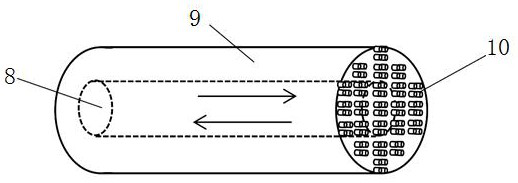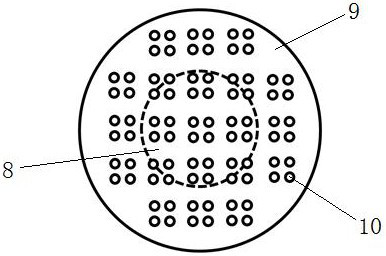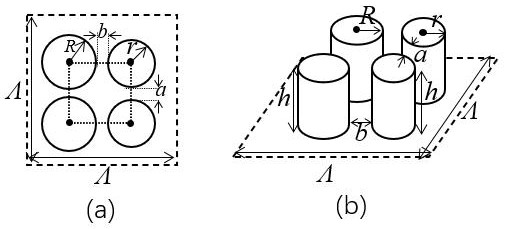Seawater temperature and salinity sensor based on double resonance effect, and measurement system and method
A sensor and dual resonance technology, applied in the field of seawater temperature and salt sensors and measurement systems based on the dual resonance effect, can solve the problems of difficult spectral demodulation, low sensitivity, large spectral line width, etc., and achieve easy integration and packaging, narrow resonance spectrum, The effect of high resonance Q
- Summary
- Abstract
- Description
- Claims
- Application Information
AI Technical Summary
Problems solved by technology
Method used
Image
Examples
Embodiment Construction
[0044] The following will clearly and completely describe the technical solutions in the embodiments of the present invention with reference to the drawings in the embodiments of the present invention.
[0045] The invention provides a seawater temperature and salinity sensor based on double resonance effect, such as figure 1 As shown, it includes a single-mode optical fiber 5 and a nano-cylindrical tetramer array located at the end face of the single-mode optical fiber 5 . The single-mode optical fiber 5 includes a core 8 and a cladding 9 covering the core 8 .
[0046] Such as figure 2 and image 3 As shown, the nano-cylindrical tetramers 10 in the array are periodically distributed on the end face of the single-mode optical fiber. Each nano-cylindrical tetramer 10 is composed of two groups of nano-cylindricals with the same height and different radii. The centers of the four nano-cylindrical cylinders are located at The four vertices of the square, and the centers of the...
PUM
| Property | Measurement | Unit |
|---|---|---|
| Height | aaaaa | aaaaa |
Abstract
Description
Claims
Application Information
 Login to View More
Login to View More - R&D Engineer
- R&D Manager
- IP Professional
- Industry Leading Data Capabilities
- Powerful AI technology
- Patent DNA Extraction
Browse by: Latest US Patents, China's latest patents, Technical Efficacy Thesaurus, Application Domain, Technology Topic, Popular Technical Reports.
© 2024 PatSnap. All rights reserved.Legal|Privacy policy|Modern Slavery Act Transparency Statement|Sitemap|About US| Contact US: help@patsnap.com










